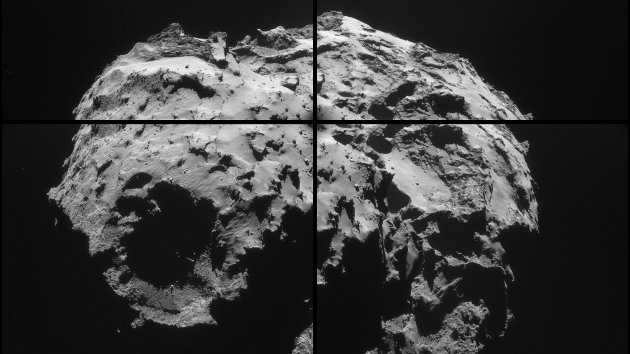There has been a significant increase in the amount of water “pouring” out of comet 67P/Churyumov-Gerasimenko, the comet on which the Rosetta mission’s Philae lander touched down in November 2014.
The 2.5-mile-wide (4-kilometer) comet was releasing the earthly equivalent of 40 ounces (1.2 liters) of water into space every second at the end of August 2014. The observations were made by NASA’s Microwave Instrument for Rosetta Orbiter (MIRO), aboard the European Space Agency’s Rosetta spacecraft. Science results from the MIRO team were released today as part of a special Rosetta-related issue of the journal Science.
“In observations over a period of three months [June through August, 2014], the amount of water in vapor form that the comet was dumping into space grew about tenfold,” said Sam Gulkis, principal investigator of the MIRO instrument at NASA’s Jet Propulsion Laboratory in Pasadena, California, and lead author of a paper appearing in the special issue. “To be up close and personal with a comet for an extended period of time has provided us with an unprecedented opportunity to see how comets transform from cold, icy bodies to active objects spewing out gas and dust as they get closer to the sun.”
The MIRO instrument is a small and lightweight spectrometer that can m67ap the abundance, temperature and velocity of cometary water vapor and other molecules that the nucleus releases. It can also measure the temperature up to about one inch (two centimeters) below the surface of the comet’s nucleus. One reason the subsurface temperature is important is that the observed gases likely come from sublimating ices beneath the surface. By combining information on both the gas and the subsurface, MIRO will be able to study this process in detail.
